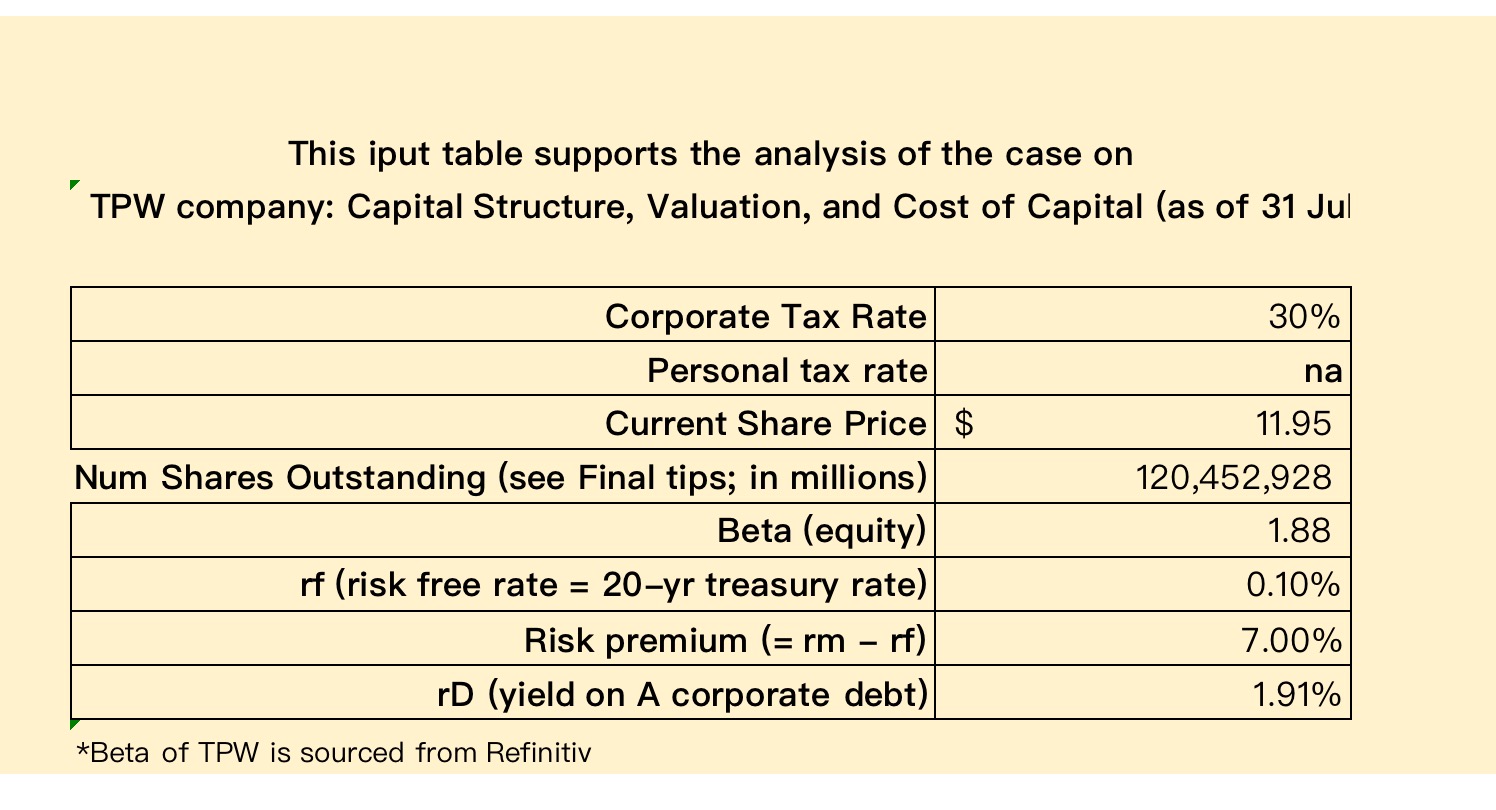Question
On 30 July 2021, you noted that TPWs closing share price is $11.95 and shares outstanding is 120,452,928 (obtained from Morningstar DatAnalysis database). TPWs revenues
On 30 July 2021, you noted that TPWs closing share price is $11.95 and shares outstanding is
120,452,928 (obtained from Morningstar DatAnalysis database). TPWs revenues had grown by
approximately 70% and 85% in year 2020 and 2021 respectively, driven by higher customer numbers and
more revenue per active customer. While the firms online home improvement industry is gaining steady
competition from smaller retailers, TPW is growing market share and making larger investments in
technology and data, brand awareness and private label products.
You also discussed with Michael the current capital market conditions and decided to focus on the
assumption that TPW could borrow $250 million at a credit rating of A with a yield of 1.91% in the current
market as of 30 July 2021. Under the proposed leveraged recapitalization, TPW would borrow $250 million
and use it either to pay an equivalent dividend or to repurchase an equivalent value of shares. You knew
that this combination of actions could affect the firms share value, cost of capital, EPS, and some other
potential areas. Accordingly, you thought to evaluate the effect of the recapitalization on these areas, which
are explained in more detail as follows:
(i)
The impact on valuation and share price
You recalled that debt increased the value of a firm by means of shielding cash flows from taxes. Thus, the
present value of debt tax shields could be added to the value of the underlying unlevered firm to yield the
value of the levered enterprise. The marginal tax rate proposed to use was 30%.
(ii)
The impact on the cost of capital
You also knew that the maximum value of the firm was achieved when the weighted average cost of capital
(WACC) was minimised. Thus, you intended to estimate what the cost of equity and the WACC might be,
if TPW pursued this capital structure change. The projected cost of debt (rD) would depend on the
assessment of the firms debt rating, A given the current capital market rates.
The cost of equity (rE) could be estimated by using a capital asset pricing model (CAPM). RBA cash rate
target of 0.1% (effective 7 July 2021) would be the risk-free return (rf) and the equity market risk premium
of 7%. TPWs beta would also need to be re-levered to reflect the projected recapitalisation.(iii)
The impact on reported earnings per share
You intended to estimate the expected effect on earnings per share (EPS) that would occur at different
levels of operating income (EBIT) with a change in leverage. You planned to draw a graph to illustrate this.
(iv)
Other effects
Lastly, you wondered whether your analysis covered everything. Where, for instance, should you consider
potential costs of bankruptcy and distress or the effects of leverage as the signal about future operations?
More leverage would also create certain constraints and incentives for management. Where should those
be reflected in the analysis?Analysis structure
As you draft a detailed proposal for the recapitalization, you are guided by the above thoughts to lay out
the following questions for consideration.
Question 1: The basic theory of capital structure
In perfect capital markets, what is the relationship between capital structure and cost of capital (WACC)?
Use the famous Miller-Modigliani propositions I and II, and TPW as an example to explain this thoroughly.
Tips:
1. Complete the table in Excel spreadsheet Q1.
2. Draw a chart using debt level (D) against rE and WACC to support the discussion of MM proposition I and II. (Paste
the chart in appendix.)
3. Show your calculations for each variable in row (7) to (17) using debt = $250 million.

Step by Step Solution
There are 3 Steps involved in it
Step: 1

Get Instant Access to Expert-Tailored Solutions
See step-by-step solutions with expert insights and AI powered tools for academic success
Step: 2

Step: 3

Ace Your Homework with AI
Get the answers you need in no time with our AI-driven, step-by-step assistance
Get Started


